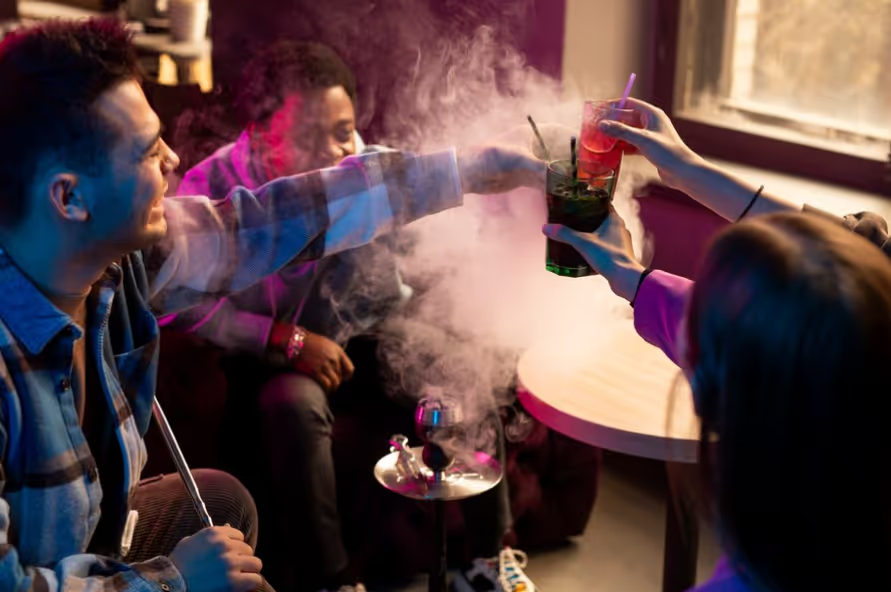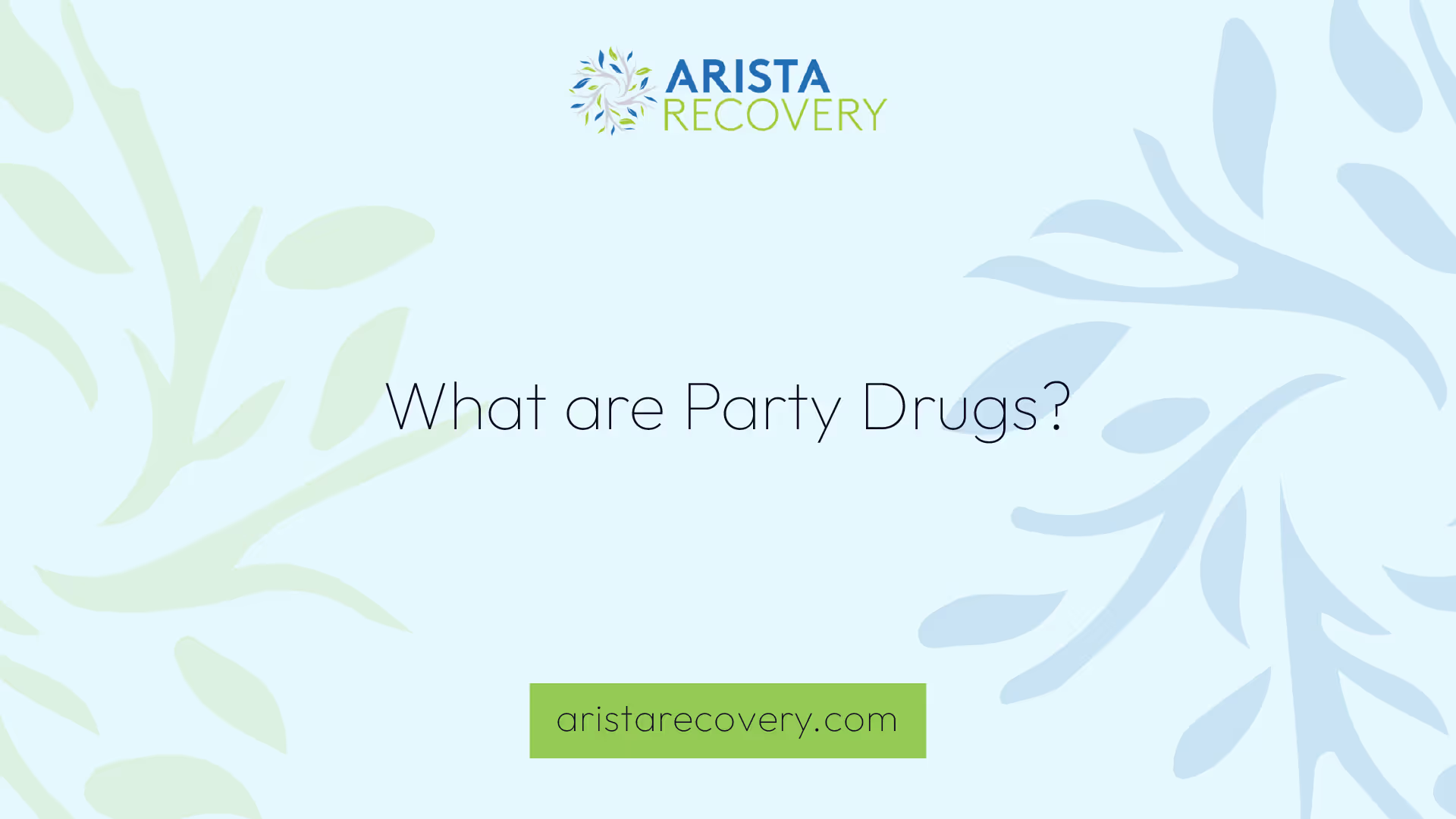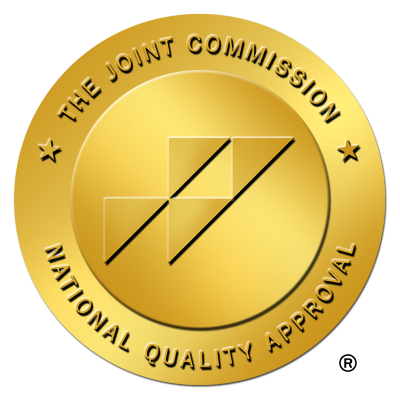What are Party Drugs?

Understanding Party Drugs
Gaining insight into the world of party drugs is an important step in understanding their appeal, risks, and the possible motivations behind their use. The following sections will define what party drugs are and introduce some of the most common types.

Definition of Party Drugs
Party drugs, also referred to as club drugs, denote substances frequently used in social settings such as house parties, college events, bars, nightclubs, and concerts. These psychoactive substances exert their effects directly on the nervous system, altering the user's perception of reality. Most party drugs are illegal, although misuse of prescription medications for recreational purposes also falls under this category [1].
These substances are often encountered at parties, festivals, or concerts, posing various risks to those who choose to use them due to their illegality and potential adverse effects [2].
Common Types of Party Drugs
Party drugs encompass a wide range of substances, including MDMA, ketamine, GHB, and LSD. These psychoactive substances are primarily used recreationally in social settings [3].
Party drugs can be divided into three main types: depressants that slow down the central nervous system, stimulants that speed up the central nervous system, and hallucinogens that distort the user's sense of reality [2].
The most commonly used party drugs fall into five categories:
- Hallucinogens
- MDMA or Ecstasy
- Inhalants
- Central Nervous System depressants like GHB and Rohypnol
- Stimulants including cocaine and methamphetamine
These drugs have a wide range of psychological and physiological effects that can be harmful and potentially fatal, especially when combined with alcohol or other substances [1].
Effects of Party Drugs on the Body
Party drugs, also known as recreational drugs, can have significant effects on the body. They can cause both immediate and long-term physiological changes, many of which can be detrimental to health.
Immediate Physiological Effects
Party drugs such as MDMA, ketamine, GHB, and LSD are psychoactive substances that can greatly affect the body’s normal functioning. These substances can cause a wide range of immediate physiological effects, which can vary depending on the type of drug used and the individual's characteristics [2].
For instance, drugs like marijuana and heroin can mimic the chemical structure of natural neurotransmitters, sending abnormal messages throughout the brain. This can disrupt normal brain processes and lead to altered perceptions, mood swings, and other cognitive changes [4].
Moreover, some drugs such as amphetamines or cocaine can cause neurons to release abnormally large amounts of natural neurotransmitters, or interfere with their normal recycling. This can amplify or disrupt communication between neurons, leading to intense surges of energy, hyperactivity, and other behavioral changes.
In the case of an overdose, party drugs can cause life-threatening symptoms like unconsciousness, seizures, or difficulty breathing.
Long-Term Health Consequences
The long-term health consequences of party drug use can be severe. Chronic use of these substances can lead to physical dependence and addiction, as well as a range of health problems.
For instance, opioids and other drugs can disrupt brain areas responsible for life-sustaining functions. This can interfere with vital functions like heart rate, breathing, and sleeping, and can also drive compulsive drug use.
Moreover, drug use can lead to much larger surges of dopamine in the brain than healthy rewards like eating or socializing. This can reinforce the connection between drug consumption, pleasure, and external cues associated with drug use, and can lead to changes in neural connectivity that make drugs more addictive than natural rewards.
Lastly, long-term use of party drugs can lead to potential harm to unborn babies or breastfed children, and can increase the risk of developing mental health disorders, cognitive impairments, and memory problems.
In conclusion, while the immediate effects of party drugs can seem appealing to some, it is important to remember that their long-term consequences can be severe and life-altering. Understanding what party drugs are and their effects on the body can help individuals make informed decisions about their use.
Impact of Party Drugs on Mental Health
While party drugs may seem like a way to enhance the enjoyment of social gatherings, their impact on mental health can be severe. The psychological effects of these substances vary, and can manifest both in the short-term and the long-term.
Short-Term Psychological Effects
In the immediate aftermath of consuming party drugs, individuals may experience a variety of psychological effects. According to healthdirect, risks include drug overdose, which can result in symptoms like unconsciousness, seizures, or difficulty breathing. Each drug can cause different symptoms in case of an overdose.
Moreover, after taking party drugs, people may experience life-threatening side effects such as paranoia, psychosis, or seizures. These substances can also lead to reckless behavior and risky decision-making, posing a threat to mental and physical well-being. The come-down after taking party drugs can result in symptoms like fatigue, irritability, and anxiety.
Specifically, substances like MDMA (ecstasy or molly) and LSD can cause confusion, depression, sleep problems, severe anxiety, and paranoia in the short-term, as per Destinations for Teens.
Long-Term Mental Health Risks
Party drug use can have profound long-term impacts on mental health. These substances, such as MDMA and LSD, affect chemical balances in the brain by impacting serotonin pathways, which regulate processes like mood, emotions, behavior, and thinking. This can contribute to depression, anxiety, and related mental health disorders, as outlined by Destinations for Teens.
MDMA, for example, increases the activity of serotonin, dopamine, and norepinephrine, leading to changes in perceptions. However, this also depletes the brain of important chemicals, resulting in long-term consequences.
Prolonged abuse of party drugs can lead to lasting mental health consequences, altering the brain and resulting in issues such as cognitive impairments, memory problems, and mood disorders. In addition, the use of party drugs is associated with an increased risk of developing mental health disorders and physical health concerns, and in severe cases, it can even lead to death.
In conclusion, while party drugs may appear to enhance the social experience in the short-term, the long-term risks to mental health are significant. It is crucial to consider these risks when faced with the decision to use these substances.
The Legality and Risks of Party Drugs
Partying and recreational drug use are often intertwined, but it's important to understand the legal implications and risks associated with party drugs.
Legal Consequences of Using Party Drugs
The use of illegal substances, often referred to as party drugs, is prohibited by law. This includes drugs frequently encountered at parties, festivals, or concerts such as MDMA (ecstasy or molly), LSD, and various hallucinogens.
Those caught using, possessing, or distributing these substances may face legal consequences, including fines, imprisonment, or both. The exact penalties can vary depending on the type and amount of drugs involved, previous convictions, and other factors. It's crucial to remember that any form of involvement with illegal substances can lead to serious legal repercussions, which can affect one's career, education, and personal life.
Risks Associated with Illicit Drug Use
Aside from the legal risks, the use of party drugs also presents significant health and safety concerns. These substances can have a profound effect on the brain and body, altering chemical balances and affecting processes such as mood, emotions, behavior, and thinking.
For example, drugs like MDMA and LSD impact serotonin pathways in the brain, which can contribute to mental health disorders such as depression and anxiety.
Moreover, according to a recent study by the Monitoring the Future (MTF), the use of party drugs, particularly marijuana and hallucinogens, among young adults has reached record levels. These substances are often used to enhance social experiences and intensify emotions and sensations. However, many party drugs are highly addictive and can pose dangerous and potentially deadly risks [1].
While party drugs may seem appealing for their ability to enhance social experiences and intensify sensations, it's important to be aware of the significant risks associated with their use. Remember, the momentary high these substances provide is vastly outweighed by the potential harm they can cause to one's health, safety, and future.
Strategies for Harm Reduction
Reducing harm associated with party drug use involves a two-pronged approach. This includes measures like pill testing for drug safety and providing treatment options for substance abuse.
Pill Testing and Drug Safety
Pill testing is a strategy used to determine the actual contents of a drug batch. The primary aim of this approach is to prevent the use of contaminated drugs, reduce overdose incidents, and promote safer drug use. By knowing the exact composition of a drug, users can make informed decisions and potentially avoid harmful substances.
Despite the potential benefits, pill testing is not currently available in all regions, including Australia. There's a need for broader discussions on the implementation of such harm reduction strategies, considering their potential to save lives and promote safer behavior among those who choose to use party drugs.
Treatment Options for Substance Abuse
Treatment for substance abuse is another important aspect of harm reduction. Substance abuse treatments can range from medical detoxification to psychological therapy and support groups. The choice of treatment often depends on the severity of the substance abuse and the individual's personal circumstances.
Medical detoxification often serves as a first step in treatment, helping individuals cope with withdrawal symptoms. Medical professionals monitor this process, ensuring the safety of the individual throughout.
Psychological therapies, including cognitive-behavioral therapy and motivational interviewing, can help individuals address the underlying issues that contribute to substance abuse. These therapies also equip individuals with strategies to manage cravings and avoid relapse.
Support groups, both in-person and online, provide a platform for individuals to share their experiences and gain support from others who have faced similar challenges. These groups can play a crucial role in maintaining sobriety and building a supportive network.
In conclusion, when discussing 'what are party drugs?', it's essential to highlight the importance of harm reduction strategies. Pill testing for drug safety and effective treatment options for substance abuse can play a significant role in mitigating the risks associated with party drug use.
The Debate on Drug Liberalization
The topic of drug liberalization, which involves the process of decriminalizing or legalizing the use or sale of prohibited drugs, is a contentious issue worldwide Wikipedia. This debate has been a focal point in discussions around party drugs, as people grapple with the complexities of their societal, health, and legal impacts. Here, we explore both sides of this debate, providing arguments for and against drug liberalization.
Arguments for Drug Legalization
Proponents of drug liberalization believe that legalizing drugs could eliminate the illegal drug market, thereby reducing the associated law enforcement costs and incarceration rates Wikipedia. They argue that the prohibition of recreational drugs has been ineffective and counterproductive. Instead, they propose a shift in approach, focusing on harm reduction practices and increasing the availability of addiction treatment.
For example, Portugal decriminalized the possession of small quantities of drugs in 2001, marking a significant shift in drug policy. This move has yielded positive results, with no significant increase in drug usage rates and a decrease in drug-related deaths and HIV infection rates Wikipedia.
In the United States, several states have also legalized the recreational use of marijuana, including Colorado, Washington, and Oregon. This has led to a decrease in law enforcement expenses related to marijuana offenses and has generated significant tax revenue for these states Wikipedia.
Arguments Against Drug Legalization
Despite the arguments in favor of drug liberalization, there is substantial pushback against this policy. Opponents caution that drug liberalization could lead to an increase in the number of drug users, potentially escalating crime, disrupting families, and increasing the prevalence of adverse physical effects among drug users Wikipedia.
Critics also argue that drug liberalization might send a message that drug use is acceptable, which could influence more people, particularly young individuals, to start using drugs. Moreover, they express concern about the potential for increased public health risks, including the risk of overdose and the spread of drug-related diseases.
Critics also point to the societal costs of increased substance use, including higher healthcare costs, lost productivity, and the potential for increased accidents and injuries related to drug use.
Overall, the debate on drug liberalization is multifaceted and complex, requiring careful consideration of both its potential benefits and risks. As societies worldwide grapple with the question, "what are party drugs?", it becomes increasingly essential to continue these discussions, striving for policies that prioritize public health, safety, and societal well-being.
References
[1]: https://www.newportinstitute.com/resources/co-occurring-disorders/party-drugs/
[2]: https://www.healthdirect.gov.au/party-drugs
[3]: https://www.canada.ca/en/health-canada/services/substance-use/get-help-with-substance-use.html
[4]: https://nida.nih.gov/publications/drugs-brains-behavior-science-addiction/drugs-brain
[5]: https://www.destinationsforteens.com/destinations-blog/cracked-party-drugs-can-mess-head/


